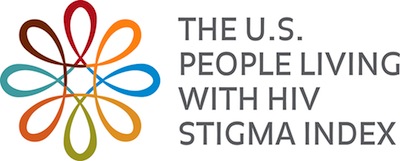 This September, more than 25 HIV activists, researchers, policy organizers and scientific experts from across the country came together in Washington, DC, to take a united stand against HIV discrimination in the United States.
This September, more than 25 HIV activists, researchers, policy organizers and scientific experts from across the country came together in Washington, DC, to take a united stand against HIV discrimination in the United States.
Their ultimate goal? To finalize plans for a People Living with HIV (PLHIV) Stigma Index in the United States, aimed at quantifying the daily battles against stigma, discrimination and prejudice that face different HIV-positive communities across the country.
Already implemented in more than 50 countries worldwide since 2008, the project uses peer-led questionnaires to quantify barriers to equality facing people living with the virus. The project then uses data from the interviews to unite people in community organizing and policy-making efforts.
And after nearly five years of campaigning and fundraising, the time for a U.S. PLHIV Stigma Index has come. Thus, HIV-positive delegates from a number of different at-risk groups came together this fall to form a national steering committee. Members discussed their specific experiences with stigma in the United States, and they determined a roadmap for the project rollout, beginning in select sites as early as 2014.
As the group finalized their report on the meeting, POZ caught up with Laurel Sprague, the North American regional coordinator for The Global Network for People Living with HIV/AIDS (GNP+), which, along with UNAIDS, has spearheaded the effort for a U.S. PLHIV Stigma Index. Here, she provides a rundown of the meeting and her thoughts on why this project is so integral to ending the national HIV/AIDS epidemic:
What exactly happened at the steering committee meeting?
We held a steering committee of about 25 people who come from all of the key populations and groups that are working with HIV in the United States: people from different race groups, MSMs, drug users, incarcerated, transgender, American Indian nations, women, Southern and rural populations and urban areas. This group was also joined by about 20 people who have expertise in research and policy located across the country. It was the first time I know of that we brought together people from all our different communities and just sat and listened to each other and heard what all of our different experiences are around stigma and discrimination. Then based on this, we decided which sites we will be using for implementing the PLHIV Stigma Index.
Which sites did you decide on?
The first thing we’re doing is implementing it on a small scale in Detroit next year as a pilot project to validate the survey, to see which questions are giving us the most information and if the questions are providing us with the information that we expect them to. After results of the pilot are analyzed and validated by spring 2014, seven additional locations are scheduled for implementation: (1) The urban east corridor of New York City, Newark and Philadelphia, (2) Washington, DC, and Baltimore, (3) the Southern states, including Alabama, Mississippi, Louisiana and Florida, (4) a state-specific project in North Carolina, (5) the California Coast, from Los Angeles to Oakland and San Francisco, (6) Rural and Native American–focused sites in New Mexico, Arizona and Colorado, and (7) Puerto Rico.
How will you implement the Stigma Index in these sites?
We’ll create a local steering committee that is similar to the national steering committee in each location to bring people in from the community in all key populations to help lead the local implementation. The steering committee will act like a board of directors who will then hire people living with HIV to manage the project on the ground. Not only is everyone who is interviewed HIV positive, but all the interviewers are HIV positive too, and we’re also looking to hire people to enter data as funds are raised.
Have there been challenges in finding support for the U.S. project?
It was really difficult to get funding for the United States and Canada because we don’t have as much access to global funding as other countries. Basically, we have had to raise all of the funds ourselves, and it has taken us a number of years to do that. We began the campaign for a U.S. PLHIV Stigma Index in 2011 and have since received seed funding from the Ittleson Foundation in New York, who have really supported us from the beginning, with additional technical, logistic and some funding by UNAIDS, the National Institutes of Health (NIH), the International Center for Research on Women (ICRW), the Stigma Action Network (SAN), Housing Works, AIDS Partnership Michigan, University of Michigan School of Public Health Sex Lab and GNP+.
We have raised most of the funds for the Detroit pilot through local partners in Michigan; however we are seeking funds and partners for the remaining implementation sites.
Who will you be interviewing for the Stigma Index?
We strive to include the greatest diversity of voices as possible, and we’re anticipating that over 3,000 people will be interviewed through the end of 2016. The site selection was really about selecting enough sites so we could make sure that every community’s voices were included. We will mostly work with a wide variety of community organizations to recruit interviewees, but in some places people spend a lot of time just talking to people on the streets, especially with sex workers and other marginalized groups, to gain their trust. We’ve also really made a commitment to including Native Americans living with HIV in this research; as a community [they are] often left out.
How will the U.S. index compare with those in other countries?
We want to keep it as close as possible to the global questionnaire so they can be analyzed together, but we’ve also written some questions to be used specifically in the United States. For example, we’re doing some extra questions for people who have been incarcerated because we think that there hasn’t been enough information about what happens to HIV-positive people while they’re in prison or the effects of that once they’ve been released. Another one of the questions we’ll ask is whether or not people have been discriminated against by other people living with HIV. It allows us to really reflect on ourselves and the support we can give each other. The index provides an opportunity for people living with HIV to work together across all our differences, and that’s something we haven’t been able to do easily in the United States.
What’s the time line for the interview process and the index?
All the data will come back by 2016, as each local implementation is completed. There will be ongoing advocacy and interventions afterward as part of the project. The data will come back to the community after it is gathered, and we will work with local academic partners to analyze it. Then, people living with HIV in the community can use it for advocacy themselves. Each community will make decisions about their priorities and their strategies for bringing change. We can look at our own communities and say, “These are the problems we want to address. We’re not supporting people like we need to, and we’re going to do better. We hope that you’ll join us.” All of this together will help us to be more powerful politically. If we’re working together in solidarity, then we have a much better chance of being able to press for the policy changes that we need.
What are some of the end goals of the U.S. index?
The People Living with HIV Stigma Index was developed in order to both document stigma and discrimination as they’re experienced by people living with HIV and also as a capacity building project for the community of people living with HIV to be able to develop research skills and literacy. Because communities will be supported to develop their own advocacy priorities, I can’t say in advance what specific issues people will choose to address or the actions they will take. However, there are some overarching goals: First, to actually have documented the daily experiences with stigma and discrimination and the ways that people respond to it. Next, the project is also partly about creating jobs and skills for HIV-positive people, so a goal of the project is to leave people with better employment potential and confidence to work in community organizing or research fields. Finally, because people living with HIV are involved at every level, the project maintains a sense of urgency, which helps to ensure that we focus on making things better in the ways that the people on the ground determine. We want people to be able to live their lives with dignity, to have access to their full health rights and sexual/reproductive rights. We want people to flourish and to develop their full capacities. The research isn’t just being collected for its own sake. We’re always thinking about how we can use this research to make things better.
How can people get involved with the project?
To contribute organizational or funding support, please contact the U.S. People Living With HIV Stigma Index’s program officer Nina Martinez at nim@georgetown.edu.
For more information about the PLHIV Stigma Index in other countries, go to stigmaindex.org.
To read the full report from the first meeting of the national steering committee for the U.S. PLHIV Stigma Index, click here.
U.S. PLHIV Stigma Index Prepares for 2014 Rollout
At their first national steering committee meeting, HIV-positive activists set policy goals for the upcoming U.S. PLHIV Stigma Index and decided in which city it would launch.






2 Comments
2 Comments